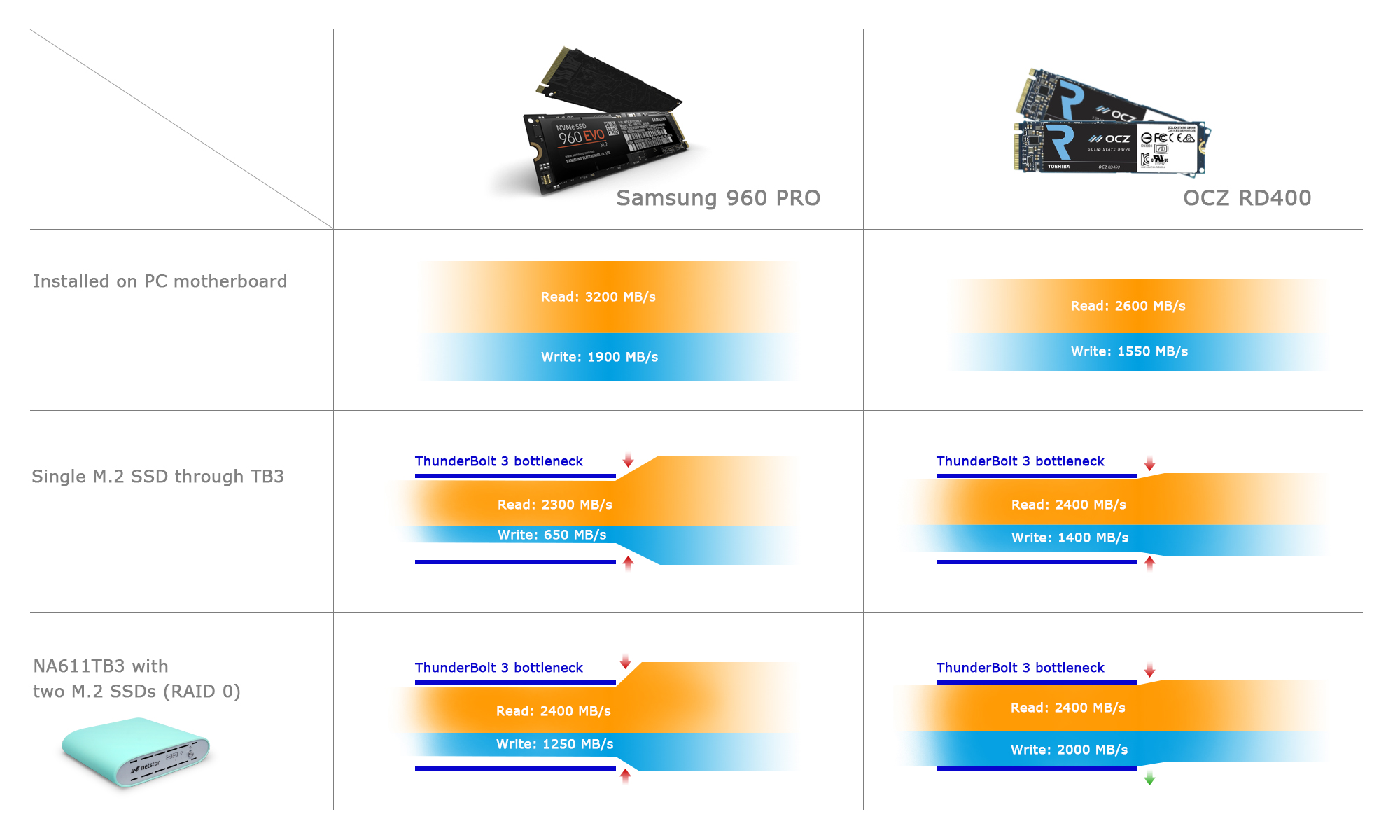Why may external M.2 NVMe SSD be slower than M.2 NVMe SSD installed within the host computer?
There will be two factors which affect the different performances:
First, spec of M.2 NVMe within computer and spec of Thunderbolt™ 3.
Second, different M.2 NVMe SSDs’ specs.
1 Comparison of internal M.2 PCIe NVMe and Thunderbolt 3 spec.
The spec of internal M.2 NVMe is PCIe 3.0 ×4: 32 Gbps (~3200 MB/s)
Although, for the external Thunderbolt 3 interface, the throughput is 40 Gbps, the bandwidth still includes video signal transmission, so in fact, for the data transmission part, the actual performance is only up to 2750 MB/s.
2 Comparison of different M.2 NVMe SSDs’ spec.
Samsung 960 PRO- read: 3500 MB/s , write: 2100 MB/s
OCZ RD400- read: 2600 MB/s , write: 1550 MB/s
As single OCZ M.2 SSD module has lower performance in spec which is below Thunderbolt 3’s bottleneck, when dual OCZ M.2 SSD modules are set with RAID 0, it will have better performance.
As single Samsung M.2 SSD module has much higher performance in spec which is far above Thunderbolt 3’s bottleneck, when dual Samsung M.2 SSD modules are set with RAID 0, it will result in a reduction to RAID 0’s read/write performance over Thunderbolt 3; both read/write will have the same reduction ratio.
